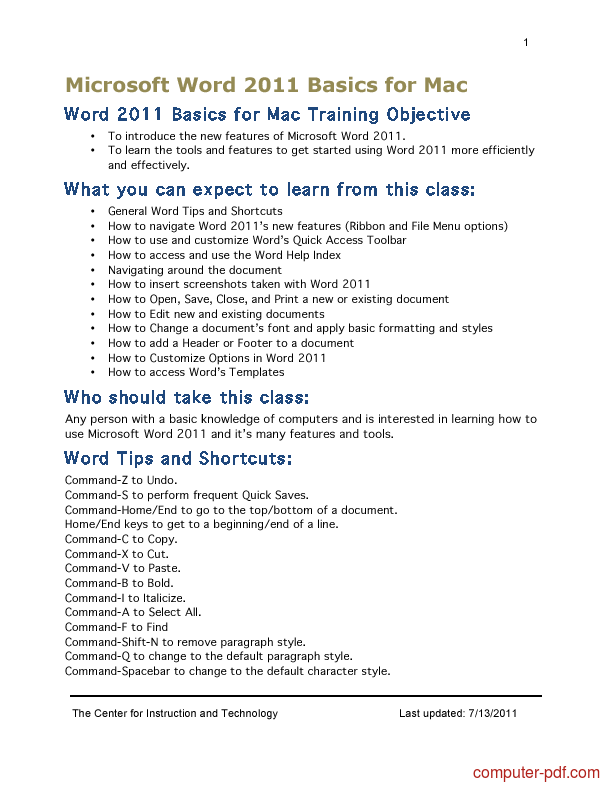If you have the Word desktop program, you can click Open in Word to open your document in Word and collapse or expand parts of the document there, but those sections will be expanded when you view your document in Word for the web. After opening your document in Word, collapse or expand parts of a document there. Then, press Ctrl+S to save your. To create Quick Parts: Type the text you want to use in a Quick Part into a new email message. Select the text block and click the Quick Parts icon on the Insert ribbon tab. Select Save selection to the Quick Part Gallery, at the bottom of the flyout. Complete the New Building Block dialog and click Ok to save it. To Use a Quick Part. Fields in Word 2011 for Mac are an essential part of mail merge, page numbering, and other tasks. Some fields are very simple; others are quite complex. Getting to know Word fields in Office 2011 for Mac is probably easiest if you start with a new, blank Word document in Print Layout view.
The real power of Word styles comes from creating your own. In Office 2011 for Mac, Word has a fast and easy way to save a new style. Say you spent some time formatting text just the way you want it and you want to save that format as a style so you can use it again in your current document or another Word 2011 for Mac document.

Here’s what you do:
Select the formatted text.
In the Styles Palette of the Toolbox, click the New Style button.
Below Properties, in the Name field, type a name for your style and then select the Add to Template check box.
If you leave this option deselected, your style is saved only with the current document.
Click OK.
Your new style appears in the Styles Palette of the Toolbox in the Pick Style to Apply section. If it doesn’t, you probably need to choose In Current Document or All Styles in the List filter at the bottom of the Styles toolbox, or scroll up or down in the list of styles.
The Style dialog allows you to create new styles, modify existing styles, delete styles, and organize styles. To create new styles from scratch or from existing styles, follow these steps:
Choose Format→Style from the menu bar.
Click the New button.

When you open the New Style dialog, you can create styles from one of four style types in the Style Type pop-up menu:
Word For Mac 2011 Quick Parts Download
Paragraph: Affects entire paragraphs.
Character: Affects any character attribute, such as font, size, and italics.
Table: Creates new styles for tables.
List: Creates styles for bulleted or numbered lists.
Notice as you change style types in the New Style dialog’s Style Type pop-up menu, the other options in the New Style dialog change as well. Click the Format pop-up menu in the lower-left corner of the New Style dialog to find specialized formatting tools. Here’s a list of formatting customizations that you can save with a style:
Font Formatting: Displays the Font dialog.
Paragraph Formatting: Displays the Paragraph dialog.
Tabs: Displays the Tabs dialog.
Border: Displays the Borders and Shadings dialog.
Language: Displays the Language dialog.
Frame: Displays the Frame dialog.
Numbering: Displays the Bullets and Numbering dialog.
Shortcut Key: Displays the Customize Keyboard dialog.
Text Effects: Displays the Text Effects dialog.
Word For Mac 2011 Quick Parts Diagram
Selecting Add to Template saves your style in Word’s Normal.dotm template (the default template used when Word opens). If you save a style in Normal.dotm, your new style will be available to all documents from then on. Selecting Add to Quick Style List adds your style to the Styles gallery on the Home tab of the Ribbon. If you select Automatically Update, Word automatically refreshes the style to include any formatting changes you make to objects that were formatting with this style.